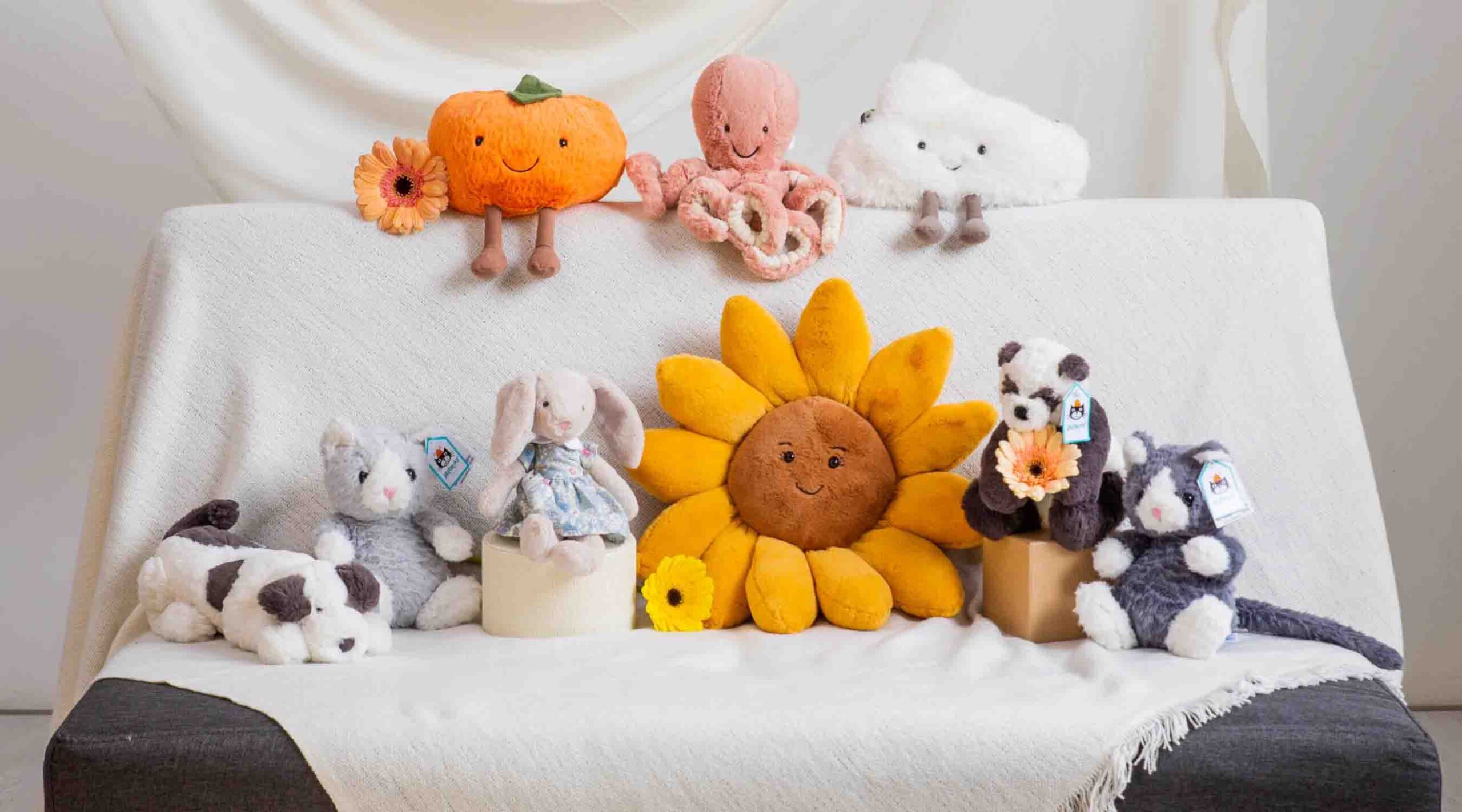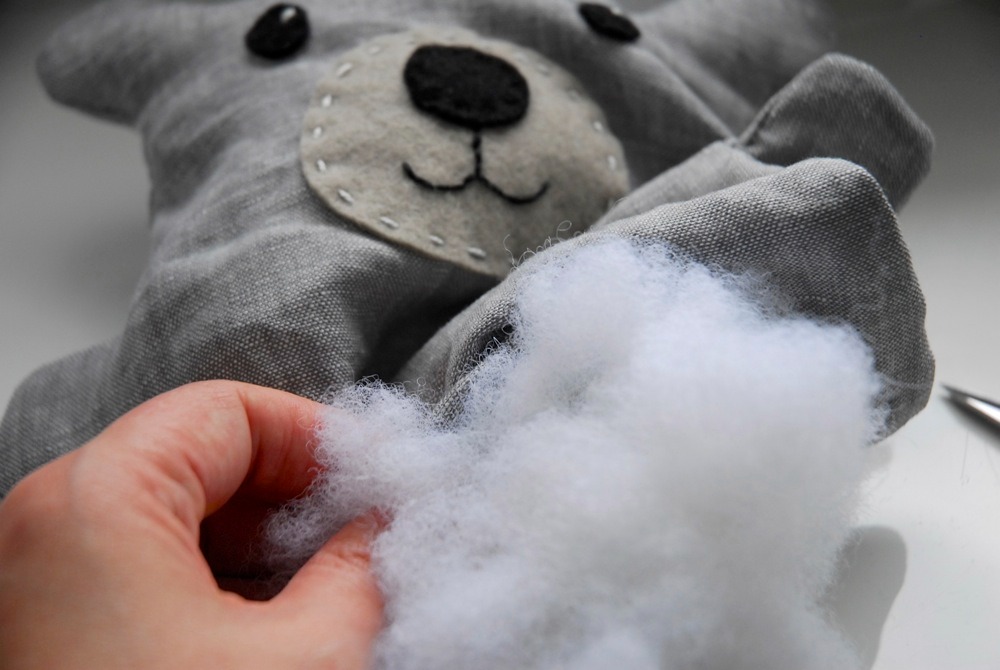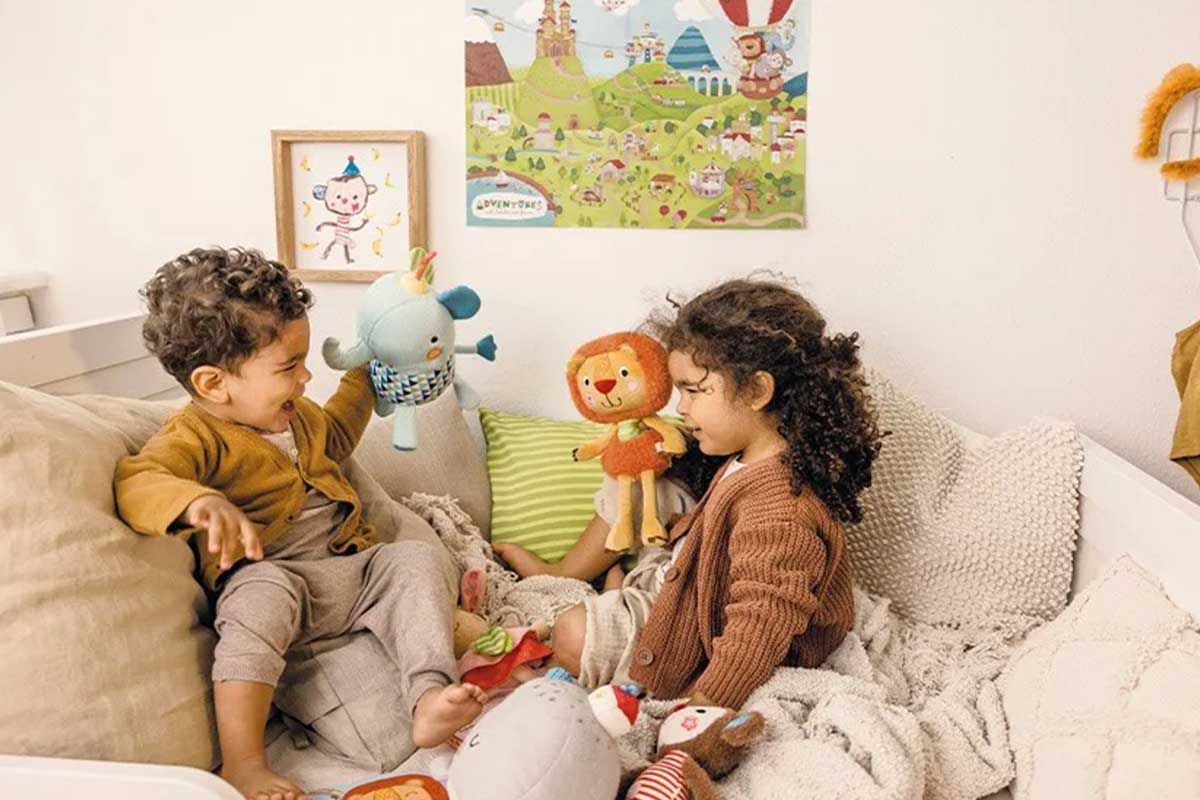Plush toys are more than simple gifts—they are emotional companions, collector’s items, and lifestyle products that hold strong value across global markets. But what defines a good plush toy? From design and material choices to safety certifications and sustainability, quality is the key factor that determines success in both retail and wholesale markets.
In this guide, we’ll examine the design, craftsmanship, and standards that make plush toys appealing, durable, and trustworthy for both children and adults.
What design elements define the appeal of a high-quality plush toy?

A plush toy’s first impression is shaped by its design. The right design not only appeals to children but also connects emotionally with teens, adults, and collectors.
Key Design Features
- Proportions and shapes – Balanced, symmetrical designs are more visually appealing. Oversized heads or exaggerated features are often used to create cuteness (inspired by kawaii culture).
- Facial expressions – Subtle embroidered eyes, smiles, and details create warmth and personality.
- Color selection – Soft pastels often appeal to children, while bold or realistic tones target collectors.
- Functionality – Some plush toys integrate accessories, sounds, or weighted features for added value.
Emotional Connection
High-quality plush toys are designed to build an emotional bond. A bear with gentle eyes or a soft bunny with floppy ears is not just “cute”—it creates comfort and nostalgia, which encourages repeat purchases.
| Design Element | Importance | Effect on Appeal |
|---|---|---|
| Balanced Shape | High | Visual harmony |
| Facial Expression | High | Emotional connection |
| Color Palette | Medium | Attracts specific audiences |
| Added Features | Medium | Expands market value |
How do material choices impact softness, durability, and safety?

Materials are at the heart of every plush toy. The fabric and stuffing determine how soft the toy feels, how long it lasts, and whether it meets safety requirements.
Outer Fabrics
- Polyester plush (minky, velboa, fleece) – Soft, durable, affordable, and highly customizable.
- Cotton and organic cotton – Natural and breathable, popular with eco-conscious buyers.
- Luxury fabrics – Wool or cashmere blends for high-end or collectible plush.
Stuffing Options
- Polyester fiberfill – Industry standard; hypoallergenic, lightweight, and affordable.
- Memory foam & beads – Used for premium or therapeutic plush toys.
- Recycled polyester (rPET) – An eco-friendly alternative gaining popularity in Europe and North America.
Safety Factors
The wrong fabric or stuffing can create hazards such as loose fibers, flammability risks, or chemical exposure. That’s why certified non-toxic, flame-resistant, and hypoallergenic materials are essential for compliance.
| Material Type | Softness | Durability | Safety Compliance | Typical Use |
|---|---|---|---|---|
| Polyester Plush | High | High | CE/ASTM Certified | Mass-market toys |
| Cotton/Organic | Medium | Medium | Natural & safe | Eco collections |
| Wool/Cashmere | Medium | High | Premium niche | Collectors |
| Recycled Polyester | High | Medium | Eco-friendly | Sustainable lines |
What role does stitching and craftsmanship play in product longevity?

Even the softest materials lose their appeal if the craftsmanship is poor. Stitching quality is one of the most important aspects of plush toy durability.
Craftsmanship Elements
- Seam strength – Reinforced seams prevent stuffing leakage during rough play.
- Invisible stitching – Ladder stitching creates a seamless finish, enhancing appearance.
- Edge finishing – Properly finished edges reduce fraying and extend the toy’s life.
Impact on Longevity
A plush toy with weak stitching may fall apart after a few uses, damaging both customer satisfaction and brand reputation. On the other hand, durable craftsmanship increases product lifespan, reducing returns and improving brand trust.
| Craftsmanship Factor | Importance | Benefit |
|---|---|---|
| Seam Strength | High | Prevents damage |
| Invisible Stitching | Medium | Improves aesthetics |
| Reinforcement | High | Extends product life |
How do safety certifications influence buyer trust in plush toys?

Buyers—especially international retailers—look for safety certifications before placing bulk orders. Certifications are not only legal requirements but also trust signals that influence consumer confidence.
Major Certifications
- ASTM F963 (USA) – Ensures mechanical and chemical safety.
- CPSIA (USA) – Covers lead, phthalates, and labeling standards.
- EN71 (Europe) – Governs flammability, toxicity, and physical properties.
- ISO 8124 (Global) – Internationally recognized standard for toy safety.
Why It Matters for Buyers
For businesses, certifications reduce risk. Non-compliance can lead to shipment rejections, fines, or recalls. For consumers, certifications guarantee that plush toys are safe for children and meet international expectations.
| Certification | Region | Coverage |
|---|---|---|
| ASTM F963 | USA | Mechanical, chemical safety |
| CPSIA | USA | Lead, phthalates, labeling |
| EN71 | Europe | Flammability, toxicity |
| ISO 8124 | Global | International toy standards |
Which customization options enhance brand value and consumer satisfaction?

Customization transforms plush toys from generic products into brand-building assets.
Key Customization Options
- Embroidery & logos – Adding a brand logo or personalized embroidery builds identity.
- Fabric & color choices – Aligning with seasonal themes or brand palettes.
- Packaging – Custom boxes and tags enhance gifting appeal.
- Functional add-ons – Weighted inserts, sound chips, or scented fillings for added differentiation.
Brand Value Enhancement
Customized plush toys help companies create exclusive collections, boosting consumer loyalty and allowing retailers to command higher margins.
| Customization Option | Benefit | Target Market |
|---|---|---|
| Embroidery/Logos | Branding | Retail & promotions |
| Fabric Variety | Differentiation | Eco & premium markets |
| Custom Packaging | Added value | Gift buyers |
| Functional Features | Experience-driven | Wellness & lifestyle |
Are sustainable and eco-friendly practices becoming key factors in plush toy quality?

Yes, sustainability is now a major quality marker in the plush toy industry. Buyers and consumers increasingly demand products that align with eco-friendly values.
Eco-Friendly Practices
- Use of rPET fabrics – Plush toys made with recycled polyester reduce plastic waste.
- Organic cotton – Chemical-free, biodegradable, and safe for sensitive users.
- Low-impact dyes – Reduce harmful chemical exposure and improve sustainability credentials.
Market Impact
In Europe and North America, eco-certifications and eco-labels are influencing purchase decisions. Brands that highlight sustainable plush toys are better positioned to win contracts with eco-conscious retailers.
| Eco-Friendly Practice | Benefit | Market Impact |
|---|---|---|
| rPET Polyester | Sustainability | Expands eco collections |
| Organic Cotton | Natural & safe | Appeals to eco buyers |
| Low-Impact Dyes | Reduced chemicals | Strengthens green branding |
Conclusion
A good plush toy is defined by appealing design, safe materials, strong craftsmanship, reliable certifications, and customization potential. Today, sustainability is also becoming a key differentiator that enhances brand reputation and customer trust.
At Kinwin, we help buyers worldwide create plush toys that balance softness, durability, and compliance—whether it’s mass-market polyester plush, premium collector’s items, or eco-friendly rPET lines. Every toy is tested to meet EN71, ASTM, CPSIA, and ISO standards.
📧 Contact us at [email protected]
🌐 Visit kinwintoys.com
Let’s design plush toys that delight consumers, build brand loyalty, and succeed in global markets.







